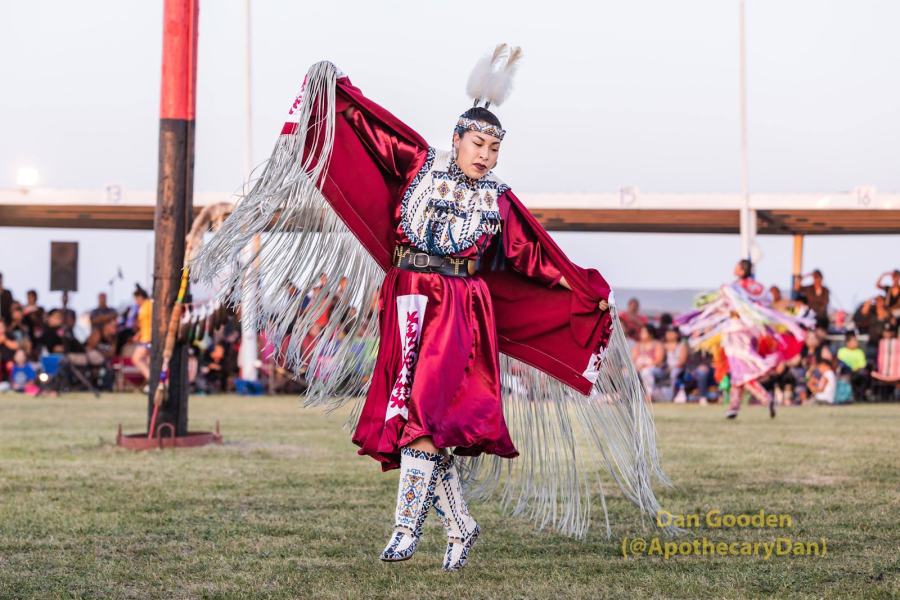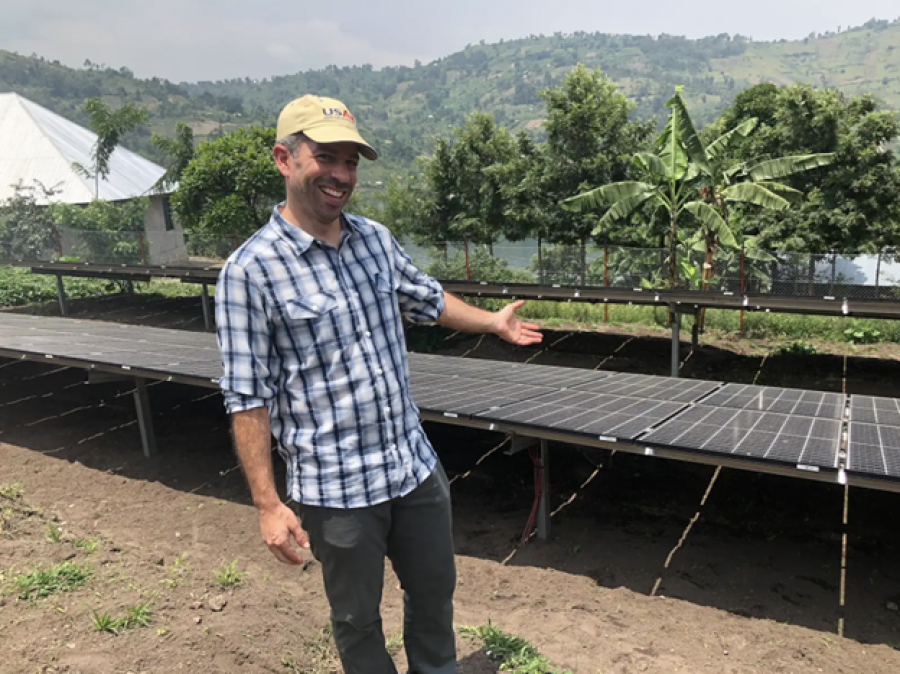Coal deposits in Big Mountain, Arizona are at the root of the present controversy surrounding U.S. policy towards Native American land claims and relocation programs in the area.
In support of a 1962 federal decision establishing the tribal interests of Navajos and Hopis in Arizona, the United States is now planning to relocate some 9500 Navajos by 1986.,/P>
The Indian Law Resource Center claims that the agency representing the Hopi position in the original settlement - the Hopi Tribal Council - is illegitimate, and not truly representative of the majority of Hopis or the traditional spiritual leaders they continue to recognize. Traditional Hopi leaders have reportedly united with Navajo leaders to oppose the relocation of Navajo. The Hopi Tribal Council, claims the Indian Law Resource Center, is in fact under the control of the US Bureau of Indian Affairs, and is used to attack Navajo rights and promote United States interests - in this case, for the mineral rights to Big Mountain.
In the original Hopi-Navajo land dispute, Navajo determination to preserve the surface rights for its occupants and Hopi Tribal Council's insistence that half of the surface be given to them led to an impasse. The Navajo argued that Big Mountain's function as a spiritual enclave was essential to Navajo cultural integrity, and that relocation of Navajo was destructive, both to individual Navajo, and group identity. The Mormon-dominated Hopi Tribal Council nevertheless pressed for surface rights that would guarantee cheap and easy access to subsurface deposits.
The federal government eventually stepped in, imposing a decision that the surface be partitioned equally between the two tribes, and that occupants remain only on lands awarded to their own tribe, or else relocate. The decision was engineered in the favor of the Hopi Tribal Council with the alleged help of John Boyden, the tribe general counsel's law firm, and the Assistant Secretary of the Interior, Harrison Loesche, who pushed for the legislation and later became vice-president of Peabody Coal, a company also represented by Boyden's law firm.
Following initial relocation, Navajo lands became densely populated, and many younger Indians relocated to neighboring border towns.
The current relocation program, estimated at $600 million, is reportedly opposed by both traditional Hopi and Navajo. Both tribes recognize the significance of Big Mountain to Navajo spiritual leaders. The mountain is regarded as a sacred place in the circle of mountains in Navajo and Hopi territory - the site of rituals, special shrines, and medicinal herbs collected by healers.
Moreover, leaders are afraid of the consequences of relocation. Navajos who were induced in recent years to relocate voluntarily were young and relatively well-educated. Even so, many had difficulty adjusting to life in urban areas. Relocated people suffer exceptionally high rates of alcoholism, suicide, accidents and cardiac failures. Extended families are disrupted, and traditional relationships to land, livestock and friends, the fabric of Navajo culture, are destroyed.
The story of Horsteen Nez is a tragedy that could unfold for thousands more Navajo. He relocated voluntarily - with promises of land, a place where he could ride his horse, and the opportunity to continue to raise sheep. Instead, he found himself the "owner" and sole occupant of a $60,000 ranch house in Flagstaff, Arizona.
He returned weekly to his ancestral lands, to tend his garden and to engage in ceremonial practices bound to sites of special significance - a cornfield sanctified by ceremonies, clumps of buffalo grass, burial places of ancestors, and the place where his own umbilical cord was buried.
One day he returned, however, to find his hogan leveled, his cornfield razed. He suffered a stroke, was hospitalized and then sent back to Flagstaff.
There he owed money for electricity, water, garbage collection, and property taxes, his dog needed a license and had to remain tied to a fence or kept on a leash.
His children visited him regularly and even brought him a large color television. But the pictures mean little; he speaks no English.
To regain his dignity he planted corn in his front yard. His neighbors, outraged at this travesty on suburban front yard decor, petitioned the city government to prevent this action but found to their dismay no ordinance prohibiting such an action.
Recurring cases like this prompted the resignation of Leon Berger, the former executive director of the federally appointed commission to oversee relocation.
Berger, who now works for the Navajo tribe, said in a recent interview:
After the experience of having moved a number of families and seeing what was happening, I felt the program needed to be reexamined...It's not working and it won't work. The impact is far greater than anything I imagined. The costs have escalated...and the problems of relocating the native people are far greater than anything I anticipated. There's been an expenditure of hundreds of millions of dollars and there's nothing in return but more human misery.
Berger's replacement, Steve Goodrich, also concedes the program's detrimental impact on many Navajos:
It's a hellish program, a real negative program. It's probably not in the best interests of many of the families to move them off the reservation. You just don't take traditional Navajos and traditional Hopis and put them in an area where they can't survive.
We've been moving to acquire additional land and in the future move people to those areas where they can duplicate what they are used to. It creates a false sense of reality to move them to someplace like Flagstaff and provide them with a rent-free home. It's probably racist as hell. It puts them in a situation they are not able to contend with.
The Indian Law Resource Center claims that relocation violates international law. They claim that by removing Navajo spiritual leaders from their land, they are "trying to terminate the right of the Dine people to practice their religion."
The United States is violating practices established by Principle VII of the Helsinki Final Act; Article 12 of the American Convention on Human Rights; Article III of the American Declaration of the Rights and Duties of Man; Article 18 of the International Covenant on Civil and Political Rights and Article 5(d)(v) of the International Convention on the Elimination of All Forms of Race Discrimination. In carrying out its relocation program, the United States is denying the right of the Dine people to own property, in violation of principles established by Article 17(1) of the Universal Declaration of Human Rights; Article 5(d)(x) of the International Convention on the Elimination of All Forms of Race Discrimination; and Article 21(1) of the American Convention on Human Rights. By reducing the livestock herds of the Dine people, the United States is destroying their means of subsistence, which violates principles established by Article 1, section 2 of the International Covenant on Economic, Social, and Cultural Rights.
The Indian Law Resource Center has recently requested that the Washington U.N. Subcommission on the Prevention of Discrimination and Protection of Minorities condemn the relocation program as a denial of the rights to free exercise of religion, property ownership, control of natural resources, and subsistence; and that the Commission send a group of observers to conduct an on-site investigation of these human rights violations.
In a plea for reconsideration of the program, Berger wrote:
I ponder: where are the anthropologists now. Where are those who are so sanctimonious about the preservation of traditional peoples - who study them, get grants to do field work, preserve their legends as if they were some museum curiosity…
I have become a betrayer of the "cause of relocation" - the so-called "final solution" to the Navajo-Hopi dispute. But the traditional leaders of both peoples know of no dispute; they can and wish to co-exist. They are prepared to stand together. The Navajo nation officially has committed itself to a people-to-people campaign to try to give status and official standing to this perspective, to avoid the cultural genocide that is underway…
There are alternatives - but first must come the recognition that buying $60,000 houses for Hosteen Nez is not a rational solution to a problem that has been created by external forces for ulterior objectives. Second must come a recognition that what is being lost may be one of the most precious facets of our American heritage - two cultures co-existing with a respect for each other that transcends the centuries and that perhaps can teach us all something about how to live on this Joint Use Area called Planet Earth.
Article copyright Cultural Survival, Inc.



